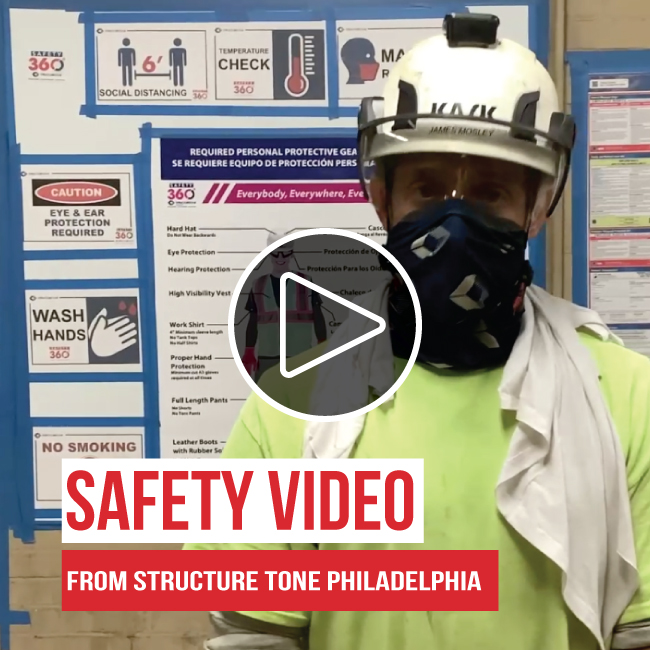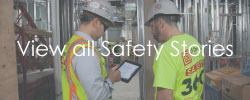United States


Awareness
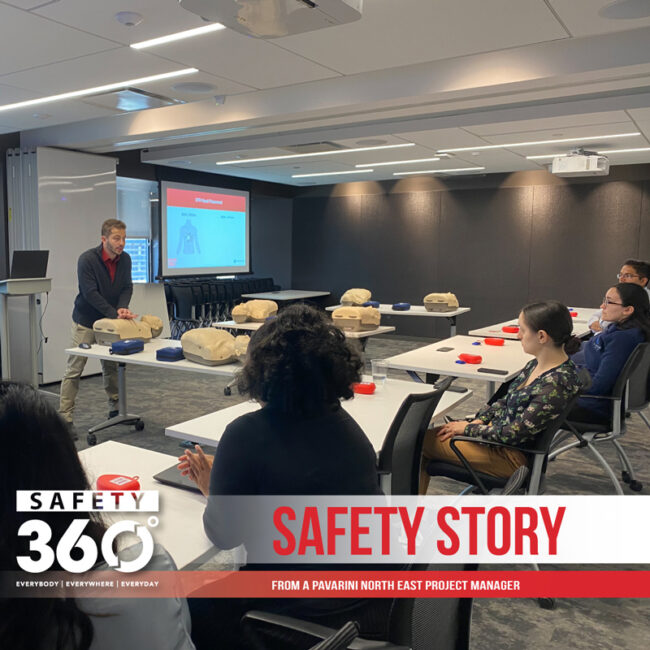
Safety Story from a Pavarini North East Project Manager
A few days before leaving for my trip to visit relatives in Australia, Pavarini North East had a group CPR training. I had never done CPR training in the past, so everything was new to me. Upon completion of training, we all received face-covering masks for administering mouth-to-mouth while performing CPR. I attached this mask to my Pavarini backpack during my trip, which I used as my carry-on luggage.
One night, I was with my sister and cousins on the way to town for dinner. We noticed a box truck pulled over on the side of the road and a tradesman walking away from his vehicle holding his chest and eventually collapsing to the ground on a small grass strip on the side of the road. We immediately did a U-turn to see how we could help and quickly realized he was having a heart attack.
This moment was the moment I realized how my training would help in this situation. My sister, a doctor, tended to him, checking his vitals, etc., I immediately went into a calm but productive state of mind, as we were trained to do. I elevated his legs and put him in a comfortable position; I assigned one cousin to call 911 and to wait at the intersection to flag the ambulance down once it arrived. I informed my other cousin to run to the nearest gas station for dissolvable aspirin. Another relative took the man’s phone and called someone from his recent call list, and we got ahold of his employer, who notified his family (wife and two kids). Although we did not have to administer CPR since the ambulance was so close, the training gave me the situational awareness skills needed to handle the situation calmly and efficiently.
This serves as a reminder to keep up with safety trainings and certifications. They sometimes feel redundant or complicated to keep up with while we handle the day-to-day stresses of our positions. But it’s in life-or-death moments like these that the hours we spend training become worth it! We called the man a few days later, and he sincerely thanked us for our help and told us that since he received treatment quickly, he was able to get the procedure he needed to bring him back to normal without any lifelong effects.
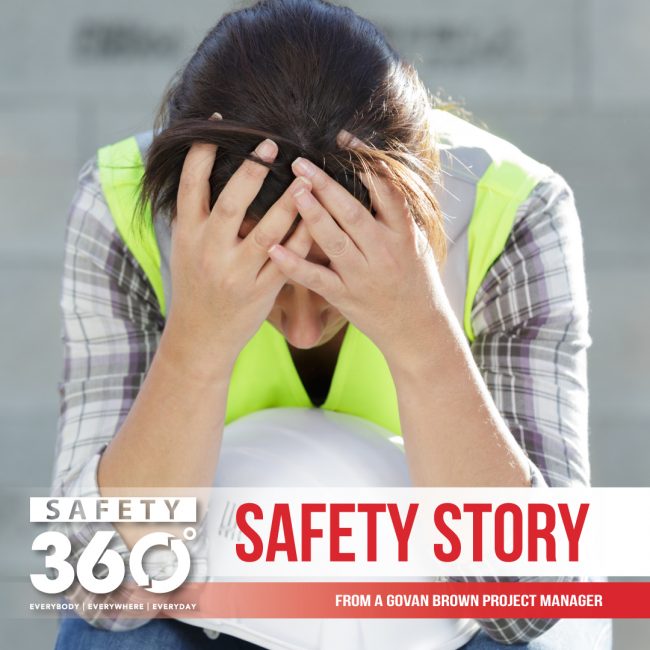
A Safety Story from a Govan Brown Project Manager
My brother-in-law, Greg, was working a long shift shunting train cars on a flat part of the rail. His boss told him to continue, after he had already worked 24 hours straight without rest and was doing a job he hadn’t updated his training on for a few years. He was exhausted but he was determined to get the tasks done in time to get home for Thanksgiving dinner. Greg used a remote control to move five 10-ton cars along the track and at about 3:00pm he collapsed and rolled onto the rail. Luckily, the remote had a fail-safe that stops all activity if the controls become off balance, so the oncoming train car stopped short of running him over completely; but unfortunately, his foot was pinned under a wheel. Once he regained consciousness, he knew he had to act quickly before the pain would knock him out again. He wore a Bluetooth and called his partner who ran for a mile to get to him. It was some time before an ambulance could get to the site. He lost a lot of blood and his partner could not pull his leg or foot free, so the paramedics had to perform a leg amputation. It’s been 10 years now since this accident happened. There’ve been graduations, moves across the country, vacations, and even adventures on bikes and boats once again. I think Greg would say his life now is richer, he is happier, and he knows how to push through the veil of pain, shame, and animosity and he has prevailed. We are all responsible for controlling the environments we and our teams work in, both on construction sites and in the office.
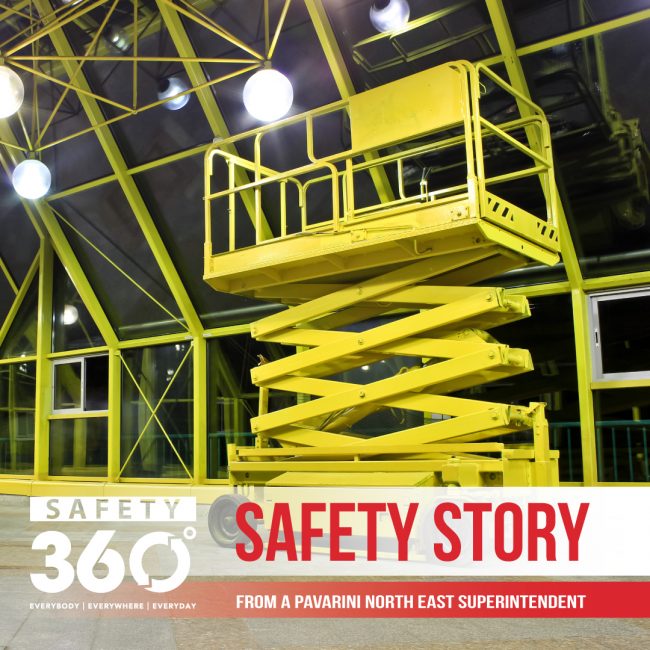
A Safety Story from a Pavarini North East Superintendent
A laborer and I were discussing a task on a bustling site, with many scissor lifts working on the floor to access the 24ft deck. While walking and concentrating on our destination, the most direct way in front of us involved walking between two parallel scissor lifts with about 6-to-8ft between them, parked in the up position. Since there was plenty of space between them and they were stationary, the most obvious thing to do would have been to continue walking straight and pass between them.
Fortunately, my intuition took over at the last second. I spun 90 degrees and went around the left side of the left scissor lift and the laborer alongside me did the same. We heard a loud collision as we walked past the lift on the left. A 5ft long section of an EMT conduit fell from about 20ft up, striking the concrete slab with enough force to bend the end of the conduit over itself into a candy cane shape. It turned out that the two parallel lifts were both occupied by electricians working on the same task, and one attempted to pass the conduit by hand over the 6-to-8ft gap but lost grip and dropped it. The timing was such that if the laborer and I had kept walking straight, the falling conduit would have struck one or both of us. To me, the lesson from that episode is about situational awareness. With all of the electronic gadgets we carry in our pockets, it is increasingly difficult to keep focused when walking on a jobsite. It is crucial to remember that we work in hazardous environments daily and staying alert of our surroundings at all times should be at the forefront of our minds.
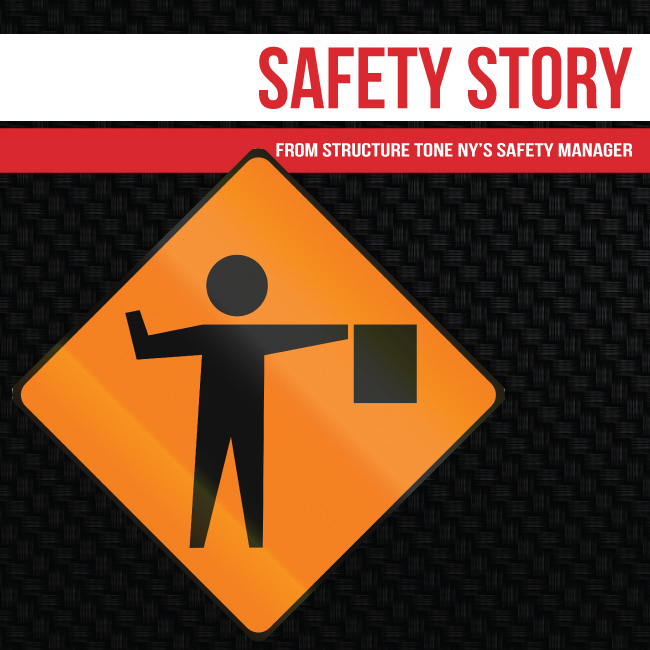
A Safety Story from Structure Tone New York Safety Manager, John T. Reilly
On a daily basis, during work hours, the pedestrian traffic in front of Pier 57 along Manhattan’s West Side has been known to reach 800 pedestrians each day. With the opening of the little island, the average has nearly doubled. As our work at Pier 57 started to wind down and we began to prepare for a temporary certificate of occupancy, subs began to demobilize. The route of exit from the project intersects with the pedestrian walkway. As you exit the loading dock on an average day, you will notice people out for a walk, walking their dogs, jogging, riding bicycles, and rollerblading. Therefore, two flaggers are required at all times, one on each side, to control pedestrian traffic and be aware of the surroundings.
The glass installers had two flaggers on each side to direct the scissor lift as it moved off the site. The flaggers checked for pedestrians, and when it was clear, they put up the stop signs and motioned for the operator to proceed. As the operator began to move, one of the flaggers heard a faint shout, “Chico, come back!” If the flagger hadn’t been paying attention to his surroundings, Chico the puppy, who was approximately 30 feet from its owner, would have gotten run over by the scissor lift. The flagger was able to corner the pup as it made a sharp right at the loading dock location. The owner was apologetic and thankful. The good news is that the flagger came by the field office, explained what happened, and said, “I now understand even more why flaggers need to be aware of everything that’s going on and why we are important. Because I would not want someone I love getting hurt.”
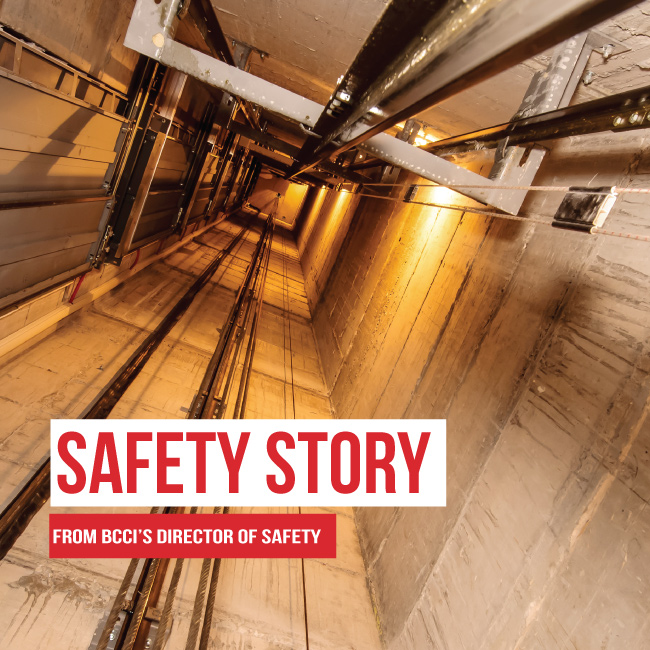
A Safety Story from BCCI Director of Safety, Matty Kernen
In September, superintendent Salvador Limon was walking the floor of a corporate interiors project he was supervising in a high-rise building when he discovered a serious safety issue with an elevator being serviced by the building. The elevator doors had been left open without any barricades, and the contractor performing service did not notify BCCI or the building of the hazard. The superintendent immediately began looking for the elevator contractor but could not locate him. He then took action, reporting the safety concern to building management, instructing a BCCI laborer foreman to place barricades in front of the open elevator doors and shaft, and notifying all subcontractors of the hazard. The superintendent’s and laborer foreman’s quick thinking protected all workers and consultants onsite and was instrumental in preventing a severe life-threatening accident or death.
A Safety Story from Structure Tone Philadelphia laborer
When a Structure Tone Philadelphia laborer noticed window washers had tied off to the wrong turrets, he immediately took action. Watch the video to hear him tell his story.
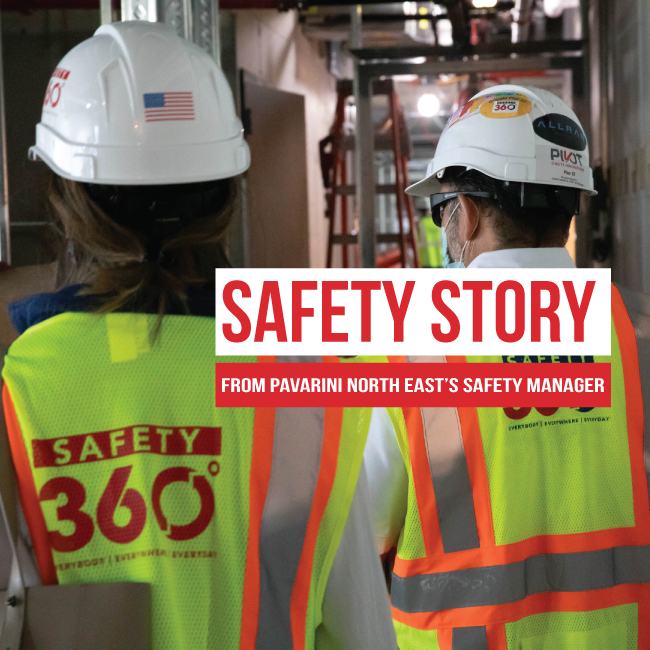
A Safety Story from Pavarini North East’s Safety Manager, Andrew Zeiss
In June of 2017, Pavarini North East was selected to complete an eight-story hotel in the heart of downtown Stamford, CT. The project started three years prior but was shut down mid-construction. The building sits in the very center of our city, so it was known to most as ‘The Eyesore.’ It was a skeleton structure, with all the floors poured, most of the exterior walls framed, and some of the glass mat sheathing installed. Because the project had been abandoned for so long, there were some major obstacles that needed to be sorted out. The bottom track of the interior framing and ductwork needed to be replaced due to rust. Our team had to evaluate both the warrantee of equipment that had been left on site and the integrity of the work in place.
We walked the building to assess what we were getting into and noticed safety had not been a priority for the previous contractor. We encountered wide-open shafts, missing handrails, unprotected window openings, and no toe boards. While there were perimeter cables, someone put their foot on the mid-cable and the cable came loose. After that, we decided to replace all cables and install toe boards throughout the entire building.
Knowing how the site was left, we knew we had to have the roof anchors tested before allowing anyone to tie-off. We brought in an engineering firm to test the 41 anchors. Upon completion, the firm recommended we replace the entire safety fall arrest anchor system. The final tally for making the job safe exceeded $140,000. This is a lesson for everyone to constantly evaluate your surroundings and determine for yourself whether a situation is safe.
